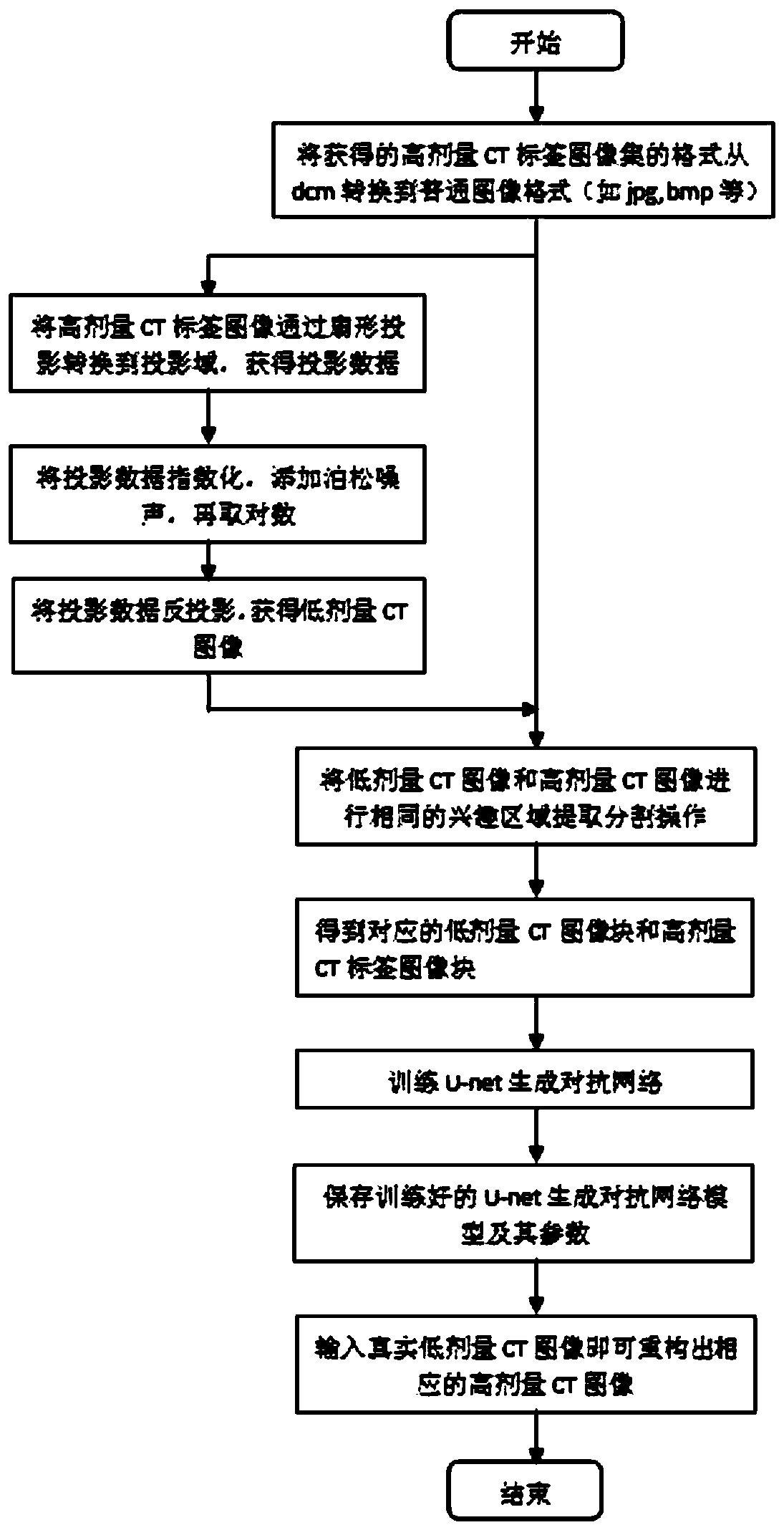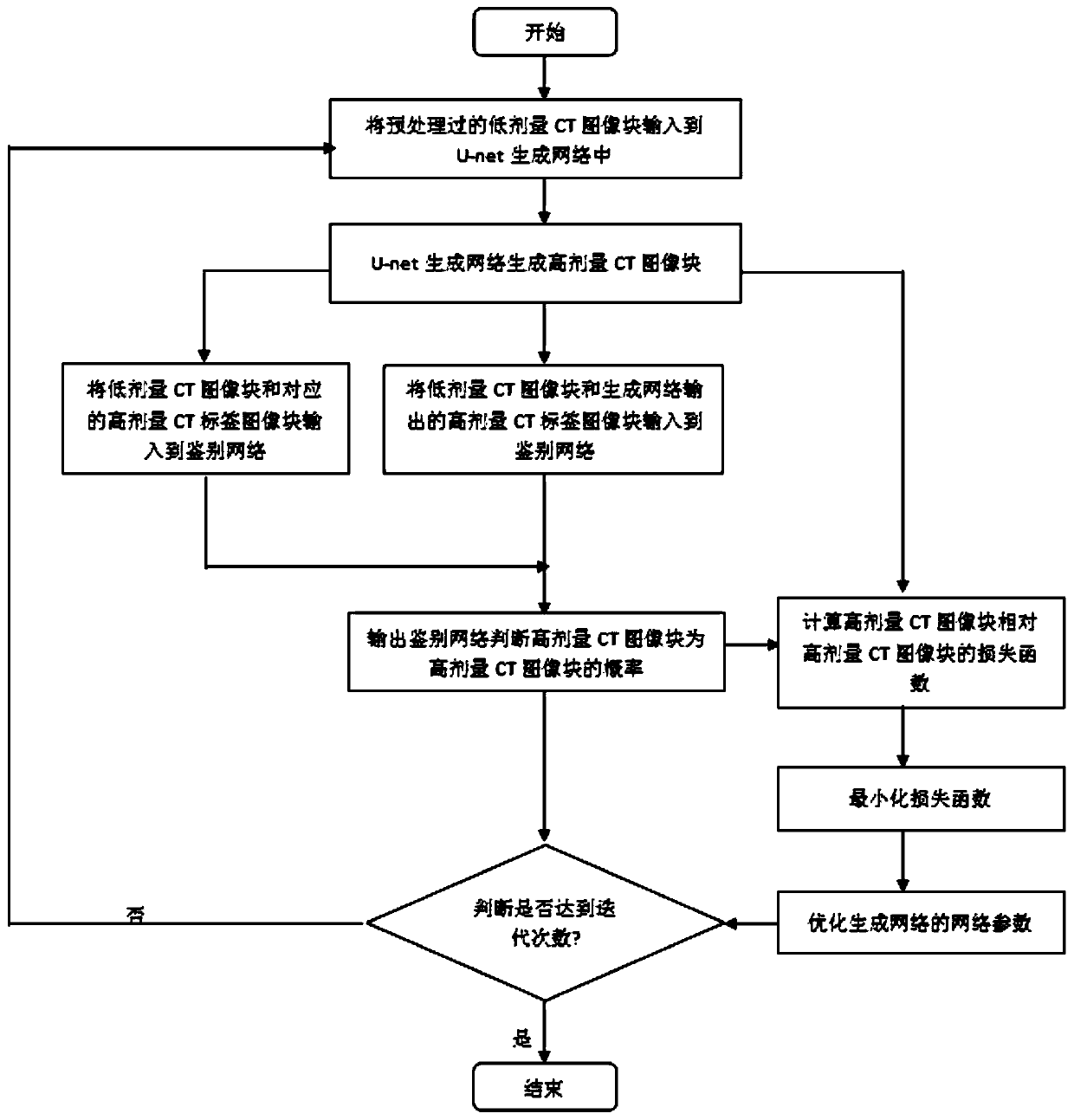Low-dose CT image restoration and denoising method
A CT image, low-dose technology, applied in the field of image processing, can solve the problems of difficult to restore CT image details, noise pollution of projection data, unfavorable clinical diagnosis, etc., to reduce physical injury, strong robustness and robustness, Guaranteed variety of effects
- Summary
- Abstract
- Description
- Claims
- Application Information
AI Technical Summary
Problems solved by technology
Method used
Image
Examples
Embodiment 1
[0063] Such as figure 1 As shown, it is a flow chart of the steps of the method for repairing and denoising low-dose CT images of the present invention. The method for realizing repair and denoising of low-dose CT images of the present invention at least includes the following steps:
[0064] Step S1: Simulate and generate low-dose CT images required for training.
[0065] Step S2: Extraction and segmentation of the region of interest.
[0066] Step S3: Train U-net to generate an adversarial network to reconstruct high-dose CT images.
[0067] Step S4: Apply the trained model to real low-dose CT images.
[0068] Please refer to figure 2 , image 3 , and the following detailed description:
[0069] Step S1
[0070] The specific operation is: transform the high-dose CT image into a fan-beam projection to obtain the projection data in the projection domain, perform exponential operation on the obtained projection matrix, add Poisson noise and then take the logarithm, and ...
PUM
 Login to View More
Login to View More Abstract
Description
Claims
Application Information
 Login to View More
Login to View More - R&D
- Intellectual Property
- Life Sciences
- Materials
- Tech Scout
- Unparalleled Data Quality
- Higher Quality Content
- 60% Fewer Hallucinations
Browse by: Latest US Patents, China's latest patents, Technical Efficacy Thesaurus, Application Domain, Technology Topic, Popular Technical Reports.
© 2025 PatSnap. All rights reserved.Legal|Privacy policy|Modern Slavery Act Transparency Statement|Sitemap|About US| Contact US: help@patsnap.com



